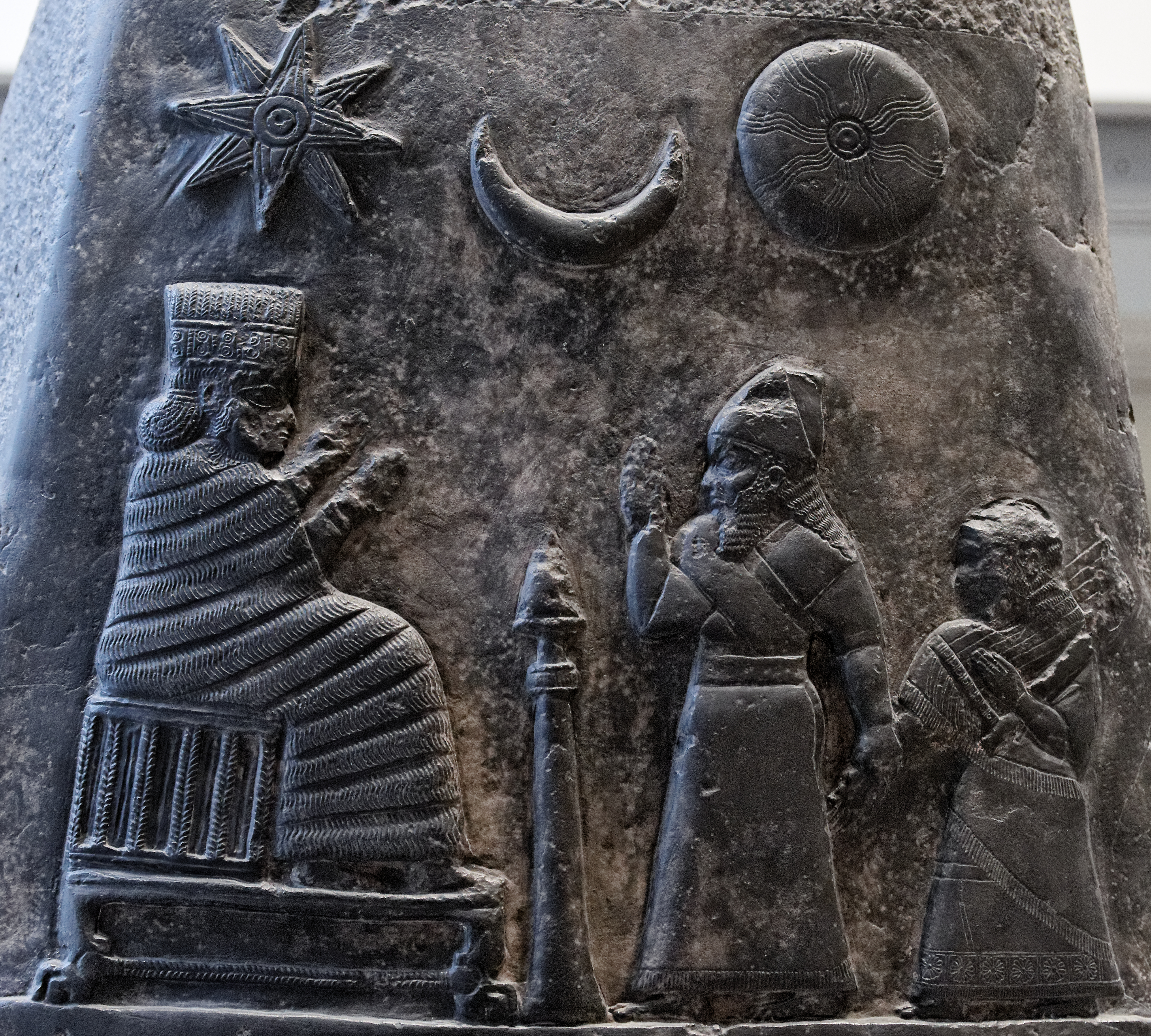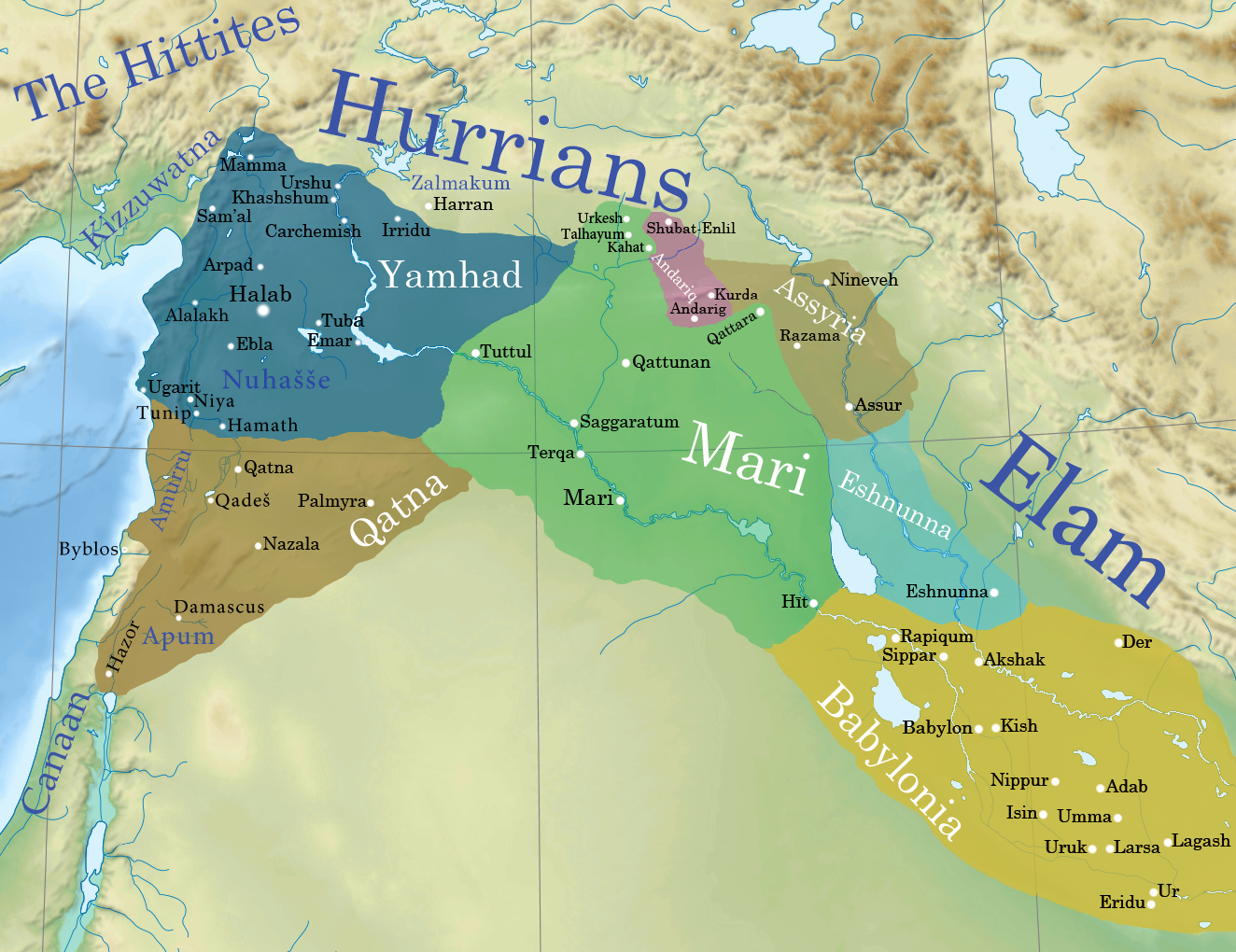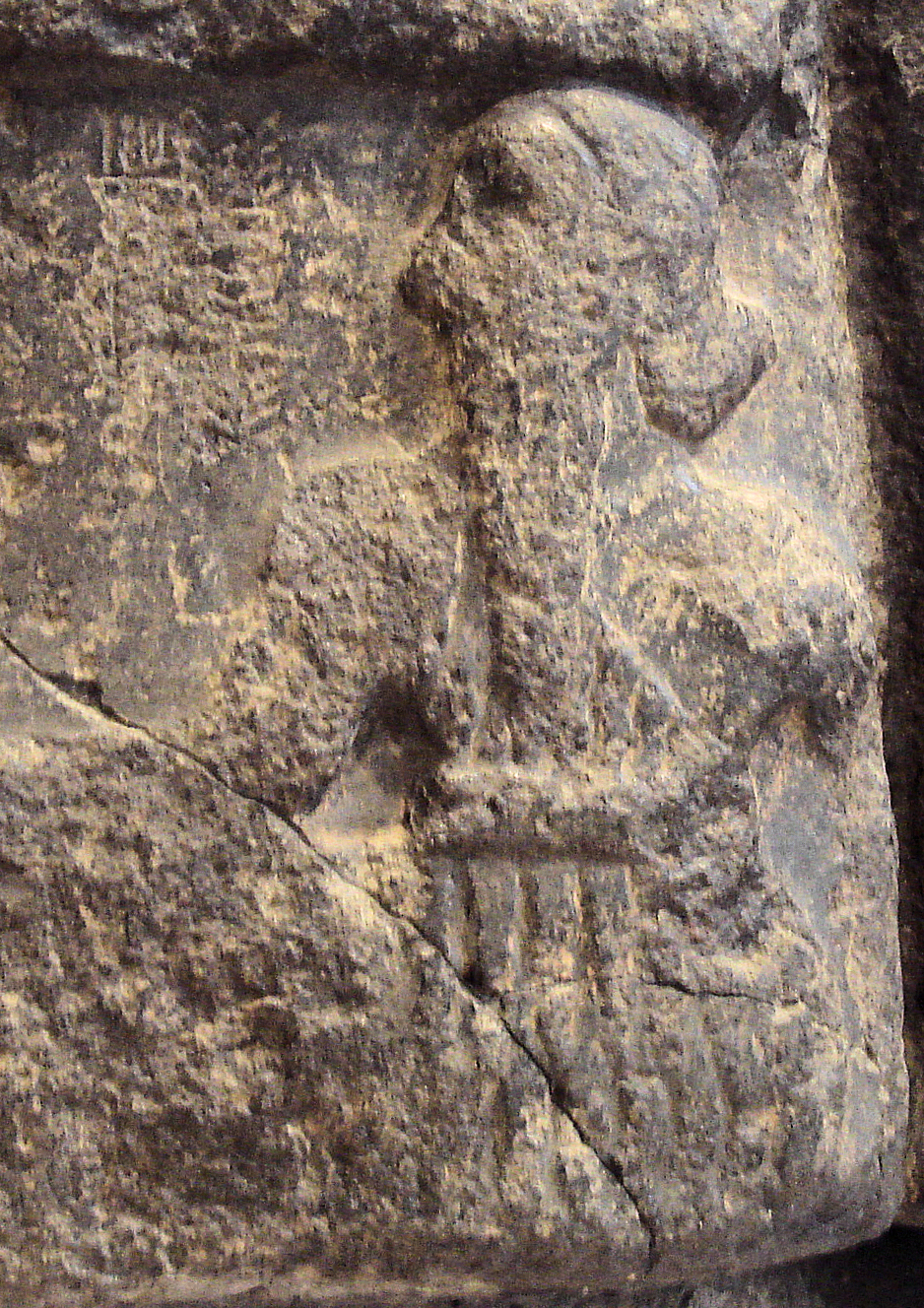|
King Of The Four Corners
King of the Four Corners of the World (Sumerian language, Sumerian: ''lugal-an-ub-da-limmu-ba'', Akkadian language, Akkadian: ''šarru kibrat arbaim'', ''šar kibrāti arbaʾi'', or ''šar kibrāt erbetti''), alternatively translated as King of the Four Quarters of the World, King of the Heaven's Four Corners or King of the Four Corners of the Universe and often shortened to simply King of the Four Corners, was a title of great prestige claimed by powerful monarchs in ancient Mesopotamia. Though the term "four corners of the world" does refer to specific geographical places within and near Mesopotamia itself, these places were (at the time the title was first used) thought to represent locations near the actual edges of the world and as such, the title should be interpreted as Merism, something equivalent to "King of all the known world", a claim to universal rule over the entire world and everything within it. The title was first used by Naram-Sin of Akkad, Naram-Sin of the Akka ... [...More Info...] [...Related Items...] OR: [Wikipedia] [Google] [Baidu] |
Naram-Sin Portrait
{{hndis ...
Naram-Suen (Naram-Sin) may refer to any of four kings in the history of Mesopotamia: * Naram-Sin of Akkad (), an Akkadian king, the most famous of the four * Naram-Sin of Assyria (), an Assyrian king * Naram-Sin of Uruk (), a king of Uruk * Naram-Suen of Eshnunna (), a king of Eshnunna See also * List of lists of ancient kings Lists of ancient monarchs are organized by region and peoples, and include rulers recorded in ancient history (3000 BC – 1700 AD) and mythology. Southern Europe Greeks Historical * Lists of rulers of Greece * List of ancient Greek tyrants ... [...More Info...] [...Related Items...] OR: [Wikipedia] [Google] [Baidu] |
Sin (mythology)
Sin () or Suen (, ) also known as Nanna ( ) is the Mesopotamian god representing the moon. While these two names originate in two different languages, respectively Akkadian language, Akkadian and Sumerian language, Sumerian, they were already used interchangeably to refer to one deity in the Early Dynastic Period (Mesopotamia), Early Dynastic period. They were sometimes combined into the double name Nanna-Suen. A third well attested name is Dilimbabbar (). Additionally, the name of the moon god could be represented by logograms reflecting his lunar character, such as d30 (), referring to days in the lunar month or dU4.SAKAR (), derived from a term referring to the crescent. In addition to his astral role, Sin was also closely associated with cattle herding. Furthermore, there is some evidence that he could serve as a judge of the dead in the Ancient Mesopotamian underworld, underworld. A distinct tradition in which he was regarded either as a god of equal status as the usual hea ... [...More Info...] [...Related Items...] OR: [Wikipedia] [Google] [Baidu] |
Akkad (city)
Akkad (; also spelt Accad, Akkade, a-ka₃-de₂ki or Agade, Akkadian: , also URI KI in Sumerian during the Ur III period) was the capital of the Akkadian Empire, which was the dominant political force in Mesopotamia during a period of about 150 years in the last third of the 3rd millennium BC. Its location is unknown. In the early days of research various unidentified mounds were considered as the location of Akkad. In modern times most of the attention has focused on an area roughly defined by 1) near Eshnunna, 2) near Sippar, 3) not far from Kish and Babylon, 4) near the Tigris River, and 5) not far from the Diyala River – all within roughly 30 kilometers of modern Baghdad in central Iraq. There are also location proposals as far afield as the Mosul area in northern Iraq. The main goddess of Akkad was Ishtar-Annunitum or ''‘Aštar-annunîtum'' (Warlike Ishtar), though it may have been a different aspect, Istar- Ulmašītum. Her husband Ilaba was also revered. Is ... [...More Info...] [...Related Items...] OR: [Wikipedia] [Google] [Baidu] |
Amurru Kingdom
Amurru ( Sumerian: 𒈥𒌅𒆠 ''MAR.TUKI''; Akkadian: 𒀀𒈬𒌨𒊏 ''Amûrra'', 𒀀𒈬𒊑 ''Amuri'', 𒀀𒄯𒊑 ''Amurri'') The Ammuru Kingdom was an ancient kingdom located in the Middle East region, known for its role in early Bronze Age trade and cultural development. Amurri'') was an Amorite kingdom established c. 2000 BC, in a region spanning present-day Northern Lebanon and north-western Syria. History The inhabitants spoke the Amorite language, an extinct early Northwest Semitic language classified as a westernmost or Amorite-specific dialect of Ugaritic. The kingdom shares a name with the eponymous god Amurru. However, the exact relationship between the two is unclear, as the god Amurru functioned as the divine personification of the Amorites and their stereotypes for the inhabitants of Mesopotamia and was not an Amorite god.Beaulieu P. -A. (2002). ''The God Amurru as Emblem of Ethnic and Cultural Identity'' in W. van Soldt, R. Kalvelagen, and D. Katz (eds ... [...More Info...] [...Related Items...] OR: [Wikipedia] [Google] [Baidu] |
Sumer
Sumer () is the earliest known civilization, located in the historical region of southern Mesopotamia (now south-central Iraq), emerging during the Chalcolithic and Early Bronze Age, early Bronze Ages between the sixth and fifth millennium BC. Like nearby Elam, it is one of the Cradle of civilization, cradles of civilization, along with ancient Egypt, Egypt, the Indus Valley Civilisation, Indus Valley, the Erligang culture of the Yellow River valley, Caral-Supe civilization, Caral-Supe, and Mesoamerica. Living along the valleys of the Tigris and Euphrates rivers, Sumerian farmers grew an abundance of grain and other crops, a surplus of which enabled them to form urban settlements. The world's earliest known texts come from the Sumerian cities of Uruk and Jemdet Nasr, and date to between , following a period of proto-writing . Name The term "Sumer" () comes from the Akkadian Empire, Akkadian name for the "Sumerians", the ancient non-Semitic languages, Semitic-speaking inhabitan ... [...More Info...] [...Related Items...] OR: [Wikipedia] [Google] [Baidu] |
Elam
Elam () was an ancient civilization centered in the far west and southwest of Iran, stretching from the lowlands of what is now Khuzestan and Ilam Province as well as a small part of modern-day southern Iraq. The modern name ''Elam'' stems from the Sumerian language, Sumerian transliteration ''elam(a)'', along with the later Akkadian language, Akkadian ''elamtu'', and the Elamite ''haltamti.'' Elamite states were among the leading political forces of the Ancient Near East. In classical literature, Elam was also known as Susiana ( ; ''Sousiānḗ''), a name derived from its capital Susa. Elam was part of the early Cities of the Ancient Near East, urbanization of the Near East during the Chalcolithic period (Copper Age). The emergence of written records from around 3000 BC also parallels Sumerian history, where slightly earlier records have been found. In the Old Elamite period (Bronze Age, Middle Bronze Age), Elam consisted of kingdoms on the Iranian plateau, centered in Ansha ... [...More Info...] [...Related Items...] OR: [Wikipedia] [Google] [Baidu] |
Syria
Syria, officially the Syrian Arab Republic, is a country in West Asia located in the Eastern Mediterranean and the Levant. It borders the Mediterranean Sea to the west, Turkey to Syria–Turkey border, the north, Iraq to Iraq–Syria border, the east and southeast, Jordan to Jordan–Syria border, the south, and Israel and Lebanon to Lebanon–Syria border, the southwest. It is a republic under Syrian transitional government, a transitional government and comprises Governorates of Syria, 14 governorates. Damascus is the capital and largest city. With a population of 25 million across an area of , it is the List of countries and dependencies by population, 57th-most populous and List of countries and dependencies by area, 87th-largest country. The name "Syria" historically referred to a Syria (region), wider region. The modern state encompasses the sites of several ancient kingdoms and empires, including the Eblan civilization. Damascus was the seat of the Umayyad Caliphate and ... [...More Info...] [...Related Items...] OR: [Wikipedia] [Google] [Baidu] |
Amorites
The Amorites () were an ancient Northwest Semitic languages, Northwest Semitic-speaking Bronze Age people from the Levant. Initially appearing in Sumerian records c. 2500 BC, they expanded and ruled most of the Levant, Mesopotamia and parts of Egypt from the 21st century BC to the late 17th century BC. The Amorites established several prominent city-states in various locations, such as Isin, Kurda, Larsa, Mari, Syria, Mari, and Ebla, and later founded Babylon and the Old Babylonian Empire. They also founded the Fourteenth Dynasty of Egypt during the fragmented era of the Second Intermediate Period of Egypt, Second Intermediate Period in the Nile Delta, which was characterized by rulers bearing Amorite names such as Yakbim Sekhaenre, and were likely part of the later Hyksos. The term in Akkadian and Sumerian texts refers to the Amorites, Amurru (god), their principal deity, and Amurru kingdom, an Amorite kingdom. The Amorites are mentioned in the Hebrew Bible as inhabitants of Ca ... [...More Info...] [...Related Items...] OR: [Wikipedia] [Google] [Baidu] |
Assyria
Assyria (Neo-Assyrian cuneiform: , ''māt Aššur'') was a major ancient Mesopotamian civilization that existed as a city-state from the 21st century BC to the 14th century BC and eventually expanded into an empire from the 14th century BC to the 7th century BC. Spanning from the early Bronze Age to the late Iron Age, modern historians typically divide ancient Assyrian history into the Early Assyrian period, Early Assyrian ( 2600–2025 BC), Old Assyrian period, Old Assyrian ( 2025–1364 BC), Middle Assyrian Empire, Middle Assyrian ( 1363–912 BC), Neo-Assyrian Empire, Neo-Assyrian (911–609 BC), and Post-imperial Assyria, post-imperial (609 BC– AD 240) periods, based on political events and gradual changes in language. Assur, the first Assyrian capital, was founded 2600 BC, but there is no evidence that the city was independent until the collapse of the Third Dynasty of Ur, in the 21st century BC, when a line of independent kings starting with Puzur-Ashur I began rulin ... [...More Info...] [...Related Items...] OR: [Wikipedia] [Google] [Baidu] |
Subartu
The land of Subartu (, Assyrian: '' mât Šubarri'') or Subar (, ) is mentioned in Bronze Age literature. The name also appears as ''Subari'' in the Amarna letters, and, in the form ''Šbr'', in Ugarit. Subartu was apparently a kingdom in Upper Mesopotamia, at the upper Tigris and later it referred to a region of Mesopotamia. Most scholars suggest that ''Subartu'' is an early name for people of upper Mesopotamia proper on the Tigris and westward, although there are various other theories placing it sometimes a little farther to the east and/or north. Its precise location has not been identified. From the point of view of the Akkadian Empire, Subartu marked the northern geographical horizon, just as Amurru, Elam and Sumer marked "west", "east" and "south", respectively, functioning as a term to mean 'north'. History The earliest references to the "four-quarters" by the kings of Akkad name Subartu as one of these quarters around Akkad, along with Martu, Elam, and Sumer. Sub ... [...More Info...] [...Related Items...] OR: [Wikipedia] [Google] [Baidu] |
Akkadians
The Akkadian Empire () was the first known empire, succeeding the long-lived city-states of Sumer. Centered on the city of Akkad ( or ) and its surrounding region, the empire united Akkadian and Sumerian speakers under one rule and exercised significant influence across Mesopotamia, the Levant, and Anatolia, sending military expeditions as far south as Dilmun and Magan (modern United Arab Emirates, Saudi Arabia, Bahrain, Qatar and Oman) in the Arabian Peninsula.Mish, Frederick C., Editor in Chief. "Akkad" '' Webster's Ninth New Collegiate Dictionary''. ninth ed. Springfield, MA: Merriam-Webster 1985. ). The Akkadian Empire reached its political peak between the 24th and 22nd centuries BC, following the conquests by its founder Sargon of Akkad. Under Sargon and his successors, the Akkadian language was briefly imposed on neighboring conquered states such as Elam and Gutium. Akkad is sometimes regarded as the first empire in history, though the meaning of this term is ... [...More Info...] [...Related Items...] OR: [Wikipedia] [Google] [Baidu] |
Points Of The Compass
The points of the compass are a set of horizontal, Radius, radially arrayed compass directions (or Azimuth#In navigation, azimuths) used in navigation and cartography. A ''compass rose'' is primarily composed of four cardinal directions—north, east, south, and west—each separated by 90 degree (angle), degrees, and secondarily divided by four ordinal (intercardinal) directions—northeast, southeast, southwest, and northwest—each located halfway between two cardinal directions. Some disciplines such as meteorology and navigation further divide the compass with additional azimuths. Within European tradition, a fully defined compass has 32 "points" (and any finer subdivisions are described in fractions of points). Compass points or compass directions are valuable in that they allow a user to refer to a specific azimuth in a Colloquialism, colloquial fashion, without having to compute or remember degrees. Designations The names of the compass point directions follow these r ... [...More Info...] [...Related Items...] OR: [Wikipedia] [Google] [Baidu] |





